- Home |
- Why With Us |
- About Us |
- Booking |
- Contact Us |
- Site Map
- Home
-
Nepal
-
Trekking
- Arun Valley with Gokyo Lakes
- Everest Base Camp Trek
- Everest- A Living Culture Exploration
- Everest Explore
- Everest Base Camp (via Thame) Trek
- Everest Base Camp with Kala Patthar
- Everest Comfort Trek
- Everest High Passes with Ama Dablam Base Camp
- Everest Mani Rimdu Festival Trek
- Everest Nagpa La Trek
- Everest with three high passes
- Gokyo Ri, Chola Pass & Chukung Ri with Kala Patthar
- Gokyo with Everest Base Camp
- Jomsom - Muktinath
- Jomsom - Muktinath
- Khayar Lake Trek
- Manaslu and Tsum Valley with Larkya La
- Upper Mustang Trek
- Manaslu High Circuit
- Manaslu, Tilicho Pass & Upper Mustang
- Annapurna Base Camp Trek
- The Annapurna Circuit Trek
- Annapurna Panorama
- Nar and Phu Valley Trekking
- Nepal Rhododendron Trek
- Royal Trek
- Saribung Trek and Expedition
- Annapurna Sanctuary Trek
- The Annapurna Sunrise Trek
- Expedition
-
Rafting
-
Peak Climbing
-
Tours
- Kathmandu-Chitwan-Jungle Tour with visit to Pokhara
- Dawn to Dusk Tour
- Historical, Natural & Cultural Tour with Camping
- Kathmandu Valley Temple Tour
- Temple - Panorama - Jungle Tour
- Taste of Nepal
- Central Nepal Tour
- Explore Nepal Tour & Trek
- Nepal Cross-country Tour
- Best of Nepal Tour & Treks
- Kathmandu valley rim Tour & Treks
- Nepal Culture Tour
- Introduction to Nepal Tour & Treks
- Nepal at a glance Tour & Treks
- Wonders of Nepal Tour & Treks
- Glimpses of Nepal Tour & Treks
- Through the Silhouette Tour & Treks
- Tent and Temple Tour
- Kathmandu-Chitwan-Pokhara Tour
- Historical, Cultural City and Jungle Tour
- Nepal Wildlife Tour
- Nepal Panorama Historical Tour
- Nepal Adventure Tour
- Nepal Pilgrimage Tour
- Ghalegaun-Ghanapokhara Homestay Tour
- Jungle Safari
- Adventure Sports
-
Trekking
- Tibet
-
Bhutan
-
India
- Yoga Tour
- About Us
-
The Great Himalayan Trail
-
Short Tours/Treks


Annapurna Region
The Annapurna region in Central Nepal is the most geographically and culturally diverse region for trekking and appears at its finest throughout the year. Stretched over 2, 6000 sq.km the area with deep valleys and high mountains encircling the giant Mt. Annapurna embrace a wide range of people and terrain from subtropical jungle to a high, dry landscape resembling the Tibetan plateau.
The vast amphitheatre of the Annapurna Sanctuary is encircled by the famous Himalayan peaks – the 'fishtail' spire of Machapuchare (6997m), Gangapurna (7454m), Annapurna 1 (8091m), the unclimbed Fang (7647m) and Annapurna South (7273m). The approach follows the Modi Khola Valley through forests of oak, rhododendron and bamboo, passing through local Gurung villages to a world of soaring peaks.
The region of Annapurna is a series of peaks in the Himalayas, a 55 km (34 mi)-long massif of which the highest point, Annapurna I, stands at 8091m, making it the 10th-highest summit in the world and one of the 14 "eight-thousanders". It is located east of a great gorge cut through the Himalaya Mountains by the Kali Gandaki River, which separates it from the Dhaulagiri massif – laying 34 km west of Annapurna I.
The entire massif and surrounding area are protected within the 7,629 km2 Annapurna Conservation Area, the first and largest conservation area in Nepal, established in 1986 by the King Mahendra Trust for Nature Conservation. The Annapurna Conservation Area is home to several world-class treks, including the Annapurna Circuit.
There are three major trekking routes in this region: to Muktinath, to Annapurna Conservation Area Project, and a circuit of the Annapurna Himal itself. The region in fact is so beautiful; it’s long been the ultimate trekking dreams for all hikers and provides an ideal introduction to trekking in the Nepal Himalayas.
Around Dhaulagiri Trekking
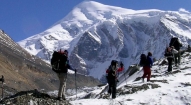 This is a long and strenuous trek but the crossing of high passes does not require much of mountaineering experience. It is, however, dependent on your physical condition, good overall health and of course good weather....
This is a long and strenuous trek but the crossing of high passes does not require much of mountaineering experience. It is, however, dependent on your physical condition, good overall health and of course good weather....
Read MoreAround Manaslu with Tilicho Pass
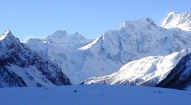 This is probably one of the best of Nepal and Tibet- a trek of amazing ethnic and scenic diversity, still relatively un-trekked; the lush rice paddies and traditional villages of Nepal's 'Middle Hills' lead to high Hi...
This is probably one of the best of Nepal and Tibet- a trek of amazing ethnic and scenic diversity, still relatively un-trekked; the lush rice paddies and traditional villages of Nepal's 'Middle Hills' lead to high Hi...
Read MoreDamodar Kunda Trekking
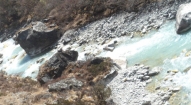 Situated in the rain shadow region, along the Upper Mustang trekking regions of Nepal, Damodar Kund (pond) is a famous pilgrimage site for attracting thousands of devotees, mainly of Hindu faith as well as Buddhist durin...
Situated in the rain shadow region, along the Upper Mustang trekking regions of Nepal, Damodar Kund (pond) is a famous pilgrimage site for attracting thousands of devotees, mainly of Hindu faith as well as Buddhist durin...
Read MoreDhaulagiri Base Camp Trek
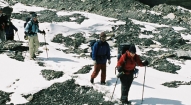 A challenging trek around Dhaulagiri the world’s ninth highest mountain involves the crossing of two Himalayan passes.This is classic trekking in Nepal starting at a low altitude walking through traditional village...
A challenging trek around Dhaulagiri the world’s ninth highest mountain involves the crossing of two Himalayan passes.This is classic trekking in Nepal starting at a low altitude walking through traditional village...
Read MoreGhandruk Trek
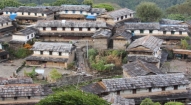 This is an ideal trip for those who do not wish to gain much height and still would like to experience Adventure in the Himalayas and feel the hospitality of Nepal’s rural communities....
This is an ideal trip for those who do not wish to gain much height and still would like to experience Adventure in the Himalayas and feel the hospitality of Nepal’s rural communities....
Read MoreJomsom - Muktinath (fly in Trek out) (16 days)
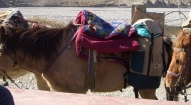 During this trip, the grandeur of Dhaulagiri glacier is prominently featured as the hike progresses along the way to the holy Hindu pilgrimage site of Muktinath situated at an altitude of 3800 meters. This unique te...
During this trip, the grandeur of Dhaulagiri glacier is prominently featured as the hike progresses along the way to the holy Hindu pilgrimage site of Muktinath situated at an altitude of 3800 meters. This unique te...
Read MoreJomsom - Muktinath (Trek in fly out) (13 days)
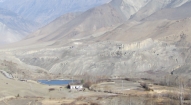 The grandeur of Dhaulagiri glacier is prominently featured as the hike progresses along the way to the holy Hindu pilgrimage site of Muktinath situated at an altitude of 3800 meters. This unique temple features 108 water...
The grandeur of Dhaulagiri glacier is prominently featured as the hike progresses along the way to the holy Hindu pilgrimage site of Muktinath situated at an altitude of 3800 meters. This unique temple features 108 water...
Read MoreKhayar Lake Trek
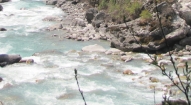 Though the trek can be done throughout the year, the spring season specially brings an unusual aroma of freshness when the valley flowers are at their full bloom....
Though the trek can be done throughout the year, the spring season specially brings an unusual aroma of freshness when the valley flowers are at their full bloom....
Read MoreManaslu and Tsum Valley with Larkya La (Pass)
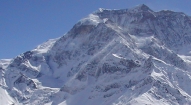 The diversity of the trek, from the Hindu middle hills to the Tibetan high-country dwellers, and the awesome mountain scenery of the Manaslu Himal and surrounding peaks combine to make this circuit one of the most intere...
The diversity of the trek, from the Hindu middle hills to the Tibetan high-country dwellers, and the awesome mountain scenery of the Manaslu Himal and surrounding peaks combine to make this circuit one of the most intere...
Read MoreManaslu High Circuit
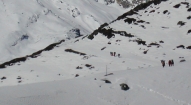 This is probably one of the best of Nepal and Tibet- a trek of amazing ethnic and scenic diversity, still relatively un-trekked; the lush rice paddies and traditional villages of Nepal's 'Middle Hills' lead to high Hi...
This is probably one of the best of Nepal and Tibet- a trek of amazing ethnic and scenic diversity, still relatively un-trekked; the lush rice paddies and traditional villages of Nepal's 'Middle Hills' lead to high Hi...
Read MoreManaslu, Tilicho Pass & Upper Mustang
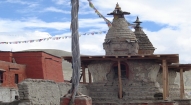 This is a part of the Great Himalaya Trail - GHT - a new route linking the high, Himalayan trails from the Far East to the far west of Nepal (and soon including Bhutan, Tibet and Pakistan). You can now join us for ...
This is a part of the Great Himalaya Trail - GHT - a new route linking the high, Himalayan trails from the Far East to the far west of Nepal (and soon including Bhutan, Tibet and Pakistan). You can now join us for ...
Read MoreAnnapurna Base Camp Trek
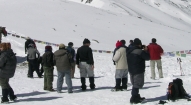 The Annapurna Base Camp- also often referred to as the Annapurna Sanctuary Trek is a hike into the dazzling natural amphitheatre encircled by the famous Himalayan peaks – the 'fishtail' spire of Machapuchare (699...
The Annapurna Base Camp- also often referred to as the Annapurna Sanctuary Trek is a hike into the dazzling natural amphitheatre encircled by the famous Himalayan peaks – the 'fishtail' spire of Machapuchare (699...
Read MoreThe Annapurna Circuit Trek
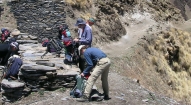 The Annapurna circuit is a classic trek in central Nepal that stretches for 300km (186 miles) around the Annapurna Mountains in the Himalaya. The trek begins at low elevation and climbs up to 5,416 meter (17,769ft) ...
The Annapurna circuit is a classic trek in central Nepal that stretches for 300km (186 miles) around the Annapurna Mountains in the Himalaya. The trek begins at low elevation and climbs up to 5,416 meter (17,769ft) ...
Read MoreAnnapurna Panorama / Ghorepani Poon Hill Trek
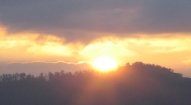 In particular the dawn views of Dhaulagiri, Machhapuchare and Annapurna South, from Poon Hill, the vantage spot for viewing, are the highlights of this trek. Short and fairly easy, this trek is a perfect starter for thos...
In particular the dawn views of Dhaulagiri, Machhapuchare and Annapurna South, from Poon Hill, the vantage spot for viewing, are the highlights of this trek. Short and fairly easy, this trek is a perfect starter for thos...
Read MoreNar and Phu Valley Trekking
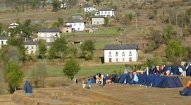 In the early 1980, sociologist Christph von Furer Haimendorf and a team of researchers who visited the region later wrote that “ the decision of the Government of Nepal to not expose such regions to the increasingl...
In the early 1980, sociologist Christph von Furer Haimendorf and a team of researchers who visited the region later wrote that “ the decision of the Government of Nepal to not expose such regions to the increasingl...
Read MoreNepal Rhododendron Trek
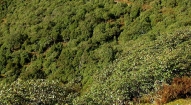 The Annapurna Ghorepani – Poon Hill Trek or the Annapurna Sunrise Trek is also known as the Rhododendron Trek if done during the spring time when the whole rhododendron forest is in full bloom. ...
The Annapurna Ghorepani – Poon Hill Trek or the Annapurna Sunrise Trek is also known as the Rhododendron Trek if done during the spring time when the whole rhododendron forest is in full bloom. ...
Read MoreRoyal Trek
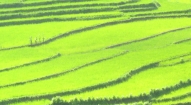 Beginning from the beautiful lakeside city of Pokhara the trek then passes through beautiful Gurung hamlets with stunning views of hillside rice terraces as well as the majestic Mt. Annapurna, Machapuchhre (fishtail) and...
Beginning from the beautiful lakeside city of Pokhara the trek then passes through beautiful Gurung hamlets with stunning views of hillside rice terraces as well as the majestic Mt. Annapurna, Machapuchhre (fishtail) and...
Read MoreSaribung Trek and Expedition
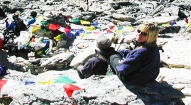 Though not necessarily a technical climbing, it is however a very challenging undertaking due to the altitude variation and remoteness of the area and at some point demands fixed lines requiring the use of Jumar....
Though not necessarily a technical climbing, it is however a very challenging undertaking due to the altitude variation and remoteness of the area and at some point demands fixed lines requiring the use of Jumar....
Read MoreAnnapurna Sanctuary Trek
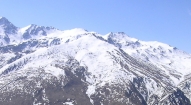 Easily accessible from Pokhara, the hidden stronghold of the Annapurna Sanctuary is one of the most popular trekking destinations in Nepal. From the terraced farmland above Pokhara, we trek on good trails through scatter...
Easily accessible from Pokhara, the hidden stronghold of the Annapurna Sanctuary is one of the most popular trekking destinations in Nepal. From the terraced farmland above Pokhara, we trek on good trails through scatter...
Read MoreThe Annapurna Sunrise Trek
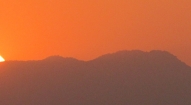 In particular the dawn views of Dhaulagiri, Machhapuchare and Annapurna South, from Poon Hill, the vantage spot for viewing, are the highlights of this trek. Short and fairly easy, this trek is a perfect starter for thos...
In particular the dawn views of Dhaulagiri, Machhapuchare and Annapurna South, from Poon Hill, the vantage spot for viewing, are the highlights of this trek. Short and fairly easy, this trek is a perfect starter for thos...
Read MoreUpper Mustang Trek
Aptly called the ‘Last Forbidden Kingdom” the region of Mustang (meaning fertile plain) was virtually closed to the foreigners until the 1990 and was opened to trekking only the following year by the Nepal go...
Read More
Trekking in Nepal
Expeditions In Nepal
Rafting in Nepal
Tours in Nepal
All rights reserved.


